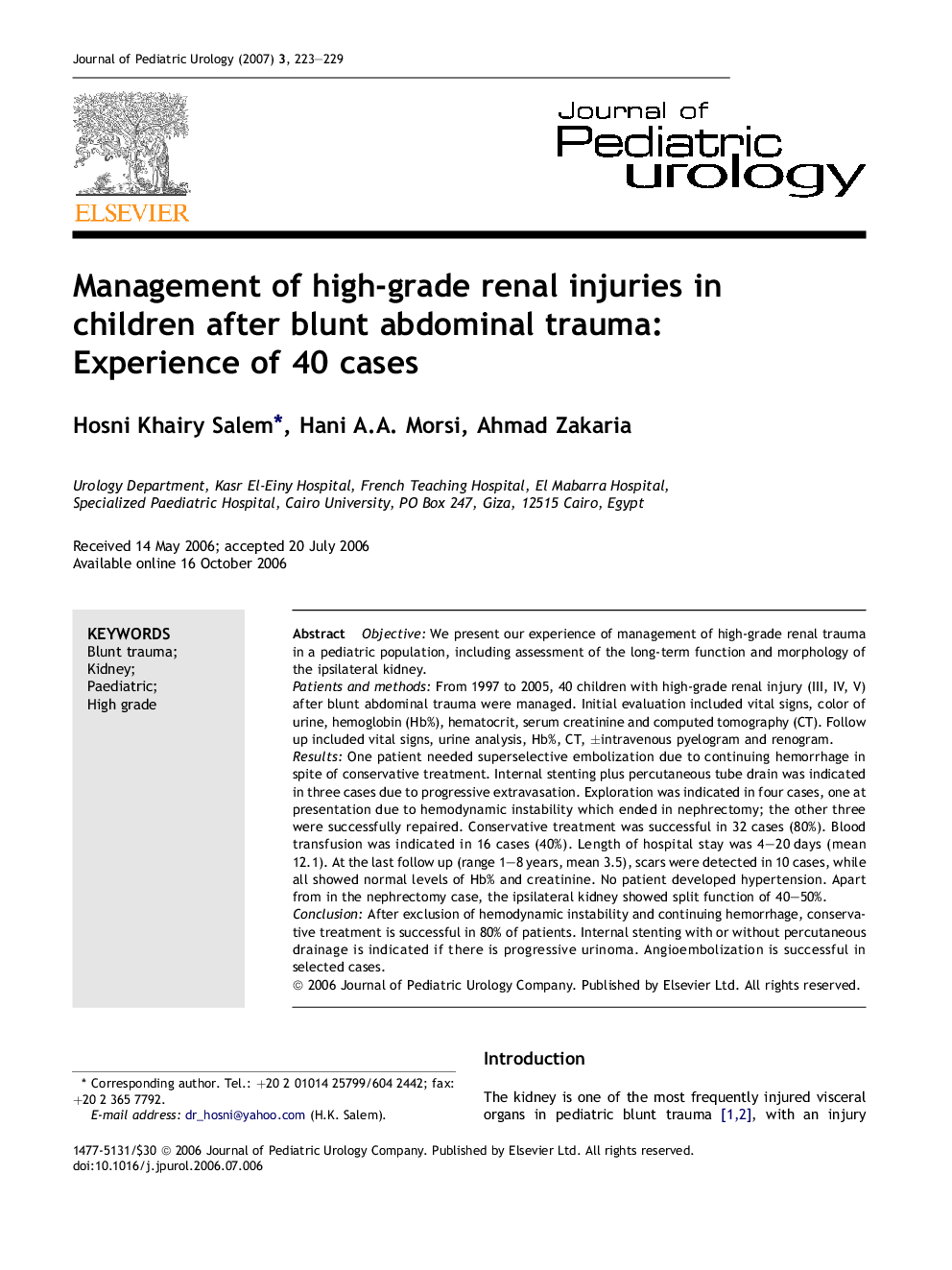| Article ID | Journal | Published Year | Pages | File Type |
|---|---|---|---|---|
| 4164095 | Journal of Pediatric Urology | 2007 | 7 Pages |
ObjectiveWe present our experience of management of high-grade renal trauma in a pediatric population, including assessment of the long-term function and morphology of the ipsilateral kidney.Patients and methodsFrom 1997 to 2005, 40 children with high-grade renal injury (III, IV, V) after blunt abdominal trauma were managed. Initial evaluation included vital signs, color of urine, hemoglobin (Hb%), hematocrit, serum creatinine and computed tomography (CT). Follow up included vital signs, urine analysis, Hb%, CT, ±intravenous pyelogram and renogram.ResultsOne patient needed superselective embolization due to continuing hemorrhage in spite of conservative treatment. Internal stenting plus percutaneous tube drain was indicated in three cases due to progressive extravasation. Exploration was indicated in four cases, one at presentation due to hemodynamic instability which ended in nephrectomy; the other three were successfully repaired. Conservative treatment was successful in 32 cases (80%). Blood transfusion was indicated in 16 cases (40%). Length of hospital stay was 4–20 days (mean 12.1). At the last follow up (range 1–8 years, mean 3.5), scars were detected in 10 cases, while all showed normal levels of Hb% and creatinine. No patient developed hypertension. Apart from in the nephrectomy case, the ipsilateral kidney showed split function of 40–50%.ConclusionAfter exclusion of hemodynamic instability and continuing hemorrhage, conservative treatment is successful in 80% of patients. Internal stenting with or without percutaneous drainage is indicated if there is progressive urinoma. Angioembolization is successful in selected cases.
